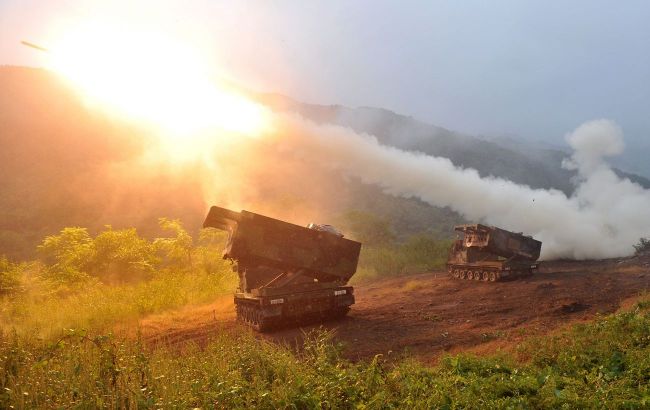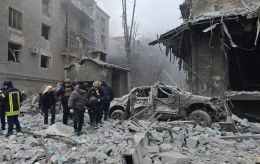IMF warns Ukraine's economy will shrink sharply if war worsens in 2025
 Photo: The war could last another year (Getty Images)
Photo: The war could last another year (Getty Images)
Experts from the International Monetary Fund have updated their negative scenario for Ukraine in the case of a more intense war.
The IMF's negative scenario still assumes the war will end in the second quarter of 2026. The updated version expects the main shock to occur in the third quarter of 2025.
"The war assumptions underpinning the program scenarios remain appropriate as peace discussions have yet to deliver tangible results," the IMF said.
The forecast predicts a 1% decline in real GDP in 2025 and zero growth in 2026. However, growth rates in the medium term remain unchanged.

Photo: IMF projects worsening economic indicators for Ukraine under a prolonged war scenario (IMF)
Budget deficits and foreign exchange reserves
Fiscal deficits have been revised upward for 2026–2027 due to expected increases in expenditures and decreases in revenues. The use of reserves is planned to stabilize the currency market and prevent destabilization.
Deficit financing will come from previously raised funds under the ERA initiative and expanded domestic borrowing. The total financing deficit will amount to $165.3 billion — $2.4 billion more than the previous forecast in March 2025.
Funding and projections
The total volume of external financing (excluding the IMF) for the entire IMF program period from 2023 to 2027 is $139 billion. Under the ERA initiative, $49.2 billion will be allocated, with some tranches postponed to 2026.
An additional $12.4 billion will be reserved for the negative scenario. After the program ends, no new donor commitments are expected. Annual support is estimated at $5–12 billion.
Given the high uncertainty, Ukraine’s return to market borrowing is not expected before 2029. This also depends on completing debt restructuring.
IMF statement
Gita Gopinath, First Deputy Managing Director of the IMF, said Russia continues to inflict severe social and economic damage on Ukraine. However, skillful economic policy and external support have helped maintain macroeconomic stability.
According to her, Ukraine's economy shows resilience despite infrastructure strikes and labor market tensions. At the same time, the war continues to affect growth prospects negatively.
"Risks to the outlook remain exceptionally high, and contingency planning is key to enable appropriate policy action should risks materialize," she added.
The IMF-supported program remains fully funded. The baseline scenario anticipates external financing of $153 billion, while the pessimistic scenario foresees $165 billion over the same four-year period. These figures include full utilization of about $50 billion from the G7 ERA initiative (Extraordinary Revenue Acceleration Loans for Ukraine), according to the statement.
War duration outlook
Ukrainians' readiness for a prolonged war has increased. In June, 60% of Ukrainians said they are "prepared to endure as long as necessary." Another 6% said they are willing to endure for one year, a relatively long period.
The IMF has updated its baseline scenario, which projects that Russia's war against Ukraine will end by late 2025. This scenario forecasts Ukrainian economic growth of 2–3% in 2025 and acceleration to 4.5% in 2026.

